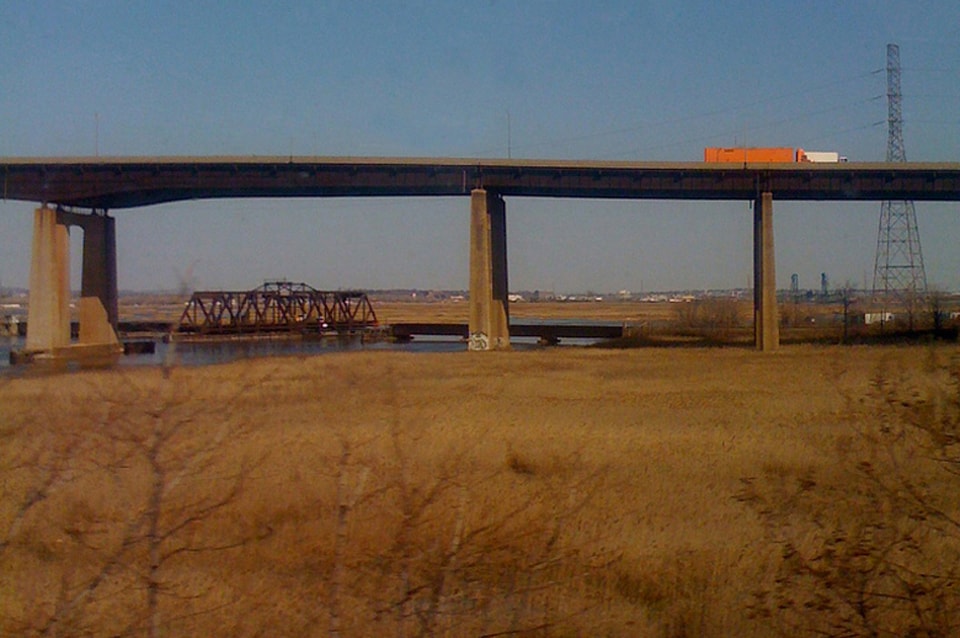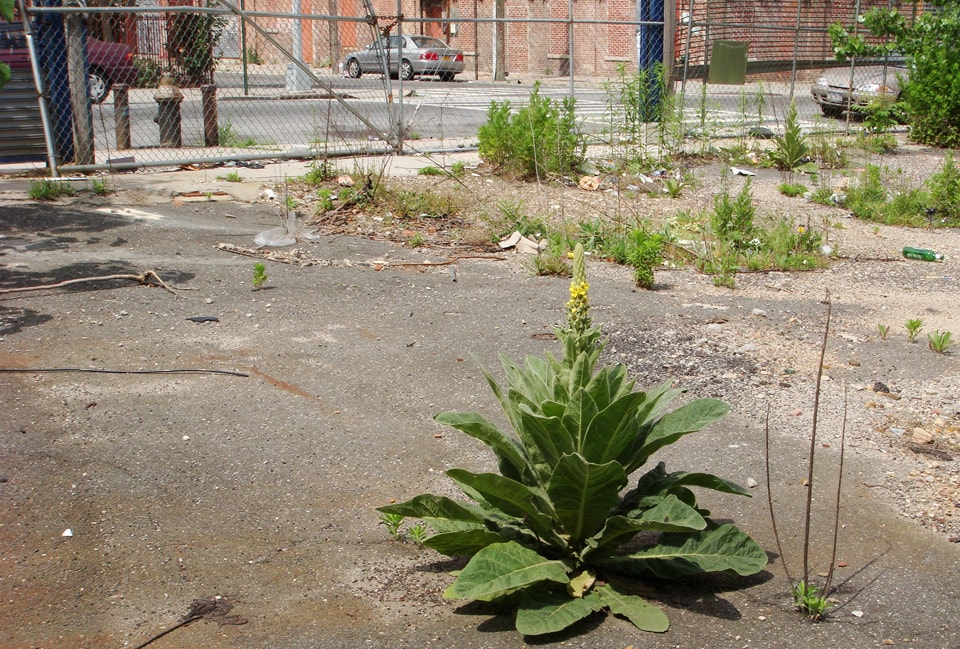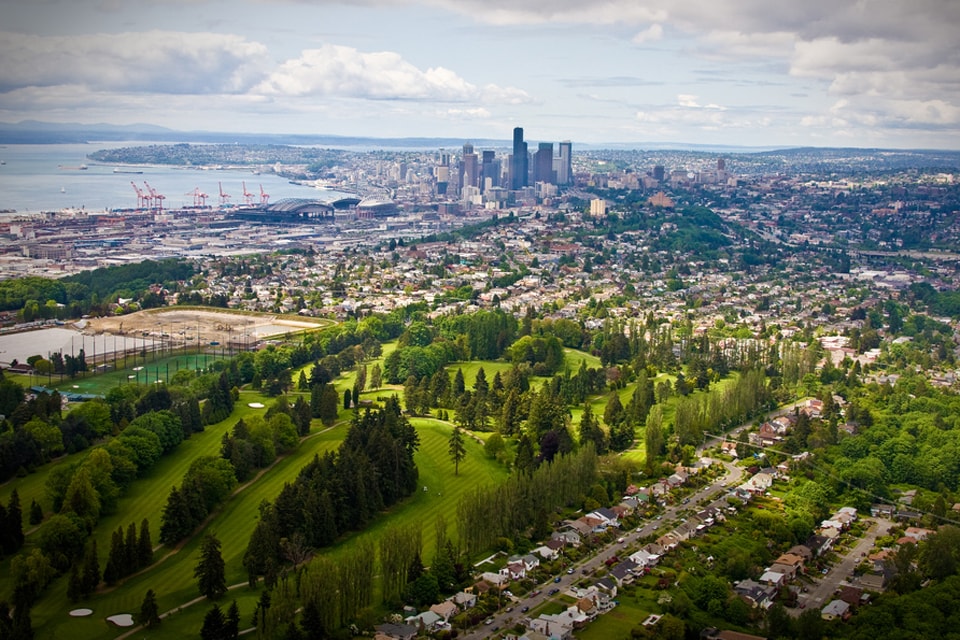Looking out over any city today, imagine that in two or three hundred years, only a very few – if any – of the built structures you see today will still be standing. Most buildings aren’t designed to last a hundred years. As each structure comes down, what will replace it? Will the next generation of cities be more sustainable? Urban people can use less energy and material per capita than rural ones in rich countries, but as the world urbanizes and human population expands, cities are expanding along with their footprints – land transformed, resources used and waste produced.
Urban ecologists, urban planners, landscape architects and other designers will be part of the transformation of today’s cities into whatever they will become. They set the stage for trajectories of change. They share a common lens: when contemplating a former building site grown over with weeds, an abandoned industrial park’s expanses of asphalt and concrete, or a landfill’s mounded slopes, both the landscape architect and the restoration ecologist see possibility where others might see a wasteland. Where these viewpoints converge, there is fertile ground for collaboration that can expand the ecological potential of cities.
Building scientific design into urban design and planning will give us better information sooner.
The effects of a career of work have the potential to ripple out into landscape-level benefits, connecting and enhancing the ecological value of the urban matrix. The interacting effects of many decisions across the urban fabric become the future landscape. The degree to which each of these can provide environmental benefits at a variety of scales and create interconnected flows between patches of resources is the degree to which the city will become a more functional ecosystem.
Sustainability, biodiversity, resilience, and ecosystem services like clean air, carbon sequestration, and water quality are now increasingly incorporated into planning and design of urban spaces. However, the connection between these general goals and the specifics of implementation is complex terrain, and the realized impacts of most projects are simply unknown.
Image by Lea Johnson
This, I would argue, is a strong reason for scientific ecologists, public land managers, and urban design professionals to integrate their work to improve the quality of the urban environment. Designers, managers and planners are in a unique position to improve the future of cities, and ecological scientists can offer tools and perspective to guide the process.
Incorporating ecological science into the design of urban spaces has the potential not only to improve the ecosystem services provided by the places where people live and work, but to increase our understanding of these systems. Urban ecologists are working to tease apart the complex dynamics of these coupled social-ecological systems, but much remains to be understood. Humanity has been altering the ecosystems we encounter for a very long time, and the science of how best to encourage the recovery of ecological functions is a young one. In many cases, the information we need to make good decisions about urgent questions simply does not yet exist.
Building scientific design into urban design and planning will give us better information sooner. As land managers and designers change the landscape using the best of current knowledge, they essentially create experimental conditions for understanding the dynamics of urban ecosystems. Observing, recording and analyzing the practices and outcomes of these changes to the land can reveal surprising insights into the nature and function of the city as an environment, and provide valuable information to guide future decision-making and policy, as seen in the work of the collaborative Baltimore Ecosystem Project. All designs can be evaluated, but the most useful information will come from projects where prior conditions are recorded, a monitoring plan is set in place, and data are recorded methodically with hypotheses in mind. The field of urban ecology has produced some important understandings that are relevant to the integration of science, planning, management and design: [1,2]
Cities are ecosystems
Most of their energy comes from outside the urban core, and much of their waste is exported, but ecosystem processes are at work in and through cities. Urban areas are characterized by higher toxicity, lower groundwater infiltration, more flooding, fewer native species, hotter temperatures, large-scale transformation of land cover, and a host of other changes. These transformations are more permanent than any other type of land use change that humans engage in, largely because of the drastic changes to the surface of the earth that urbanization produces – removing soils and paving or building on top. Yet many wild plants and animals persist, bacteria and insects abound, and more than half of humanity now depends on cities to provide basic environmental benefits like clean air and clean water. The interrelationships between ecological functions and land transformation need to be acknowledged and incorporated into decisions that determine how those transformations unfold. This is one key to improving how well cities will provide essential services to the expanding urban population.
Image by Lea Johnson
Ecological and human processes are intertwined in cities
Water, carbon and nutrient cycles don’t respect borders. Urban trees take in carbon dioxide, filter pollutants, and provide us with oxygen. It rains, and water flows into rivers, streams and the ocean, carrying what it gathers from the gutters – and often overflowing the sewers. Gardeners kill pests with chemicals, and bees visit squash flowers. Garbage-fed squirrels are found at higher densities in city parks than in wilder forests. House centipedes come inside for the winter. Everyone eats. Everything we bring into the city for our use – hamburgers, cotton shirts, plastic – comes from somewhere, and it will go somewhere else when we are done with it.
This is one of the central understandings of ecology: systems are interconnected. In no way are cities apart from nature. They both contain and are inextricably imbedded within nature. Social-ecological systems are dominated by human beings, but we are not entirely in control; the effects of our actions are not always direct and not always immediate. The ecological health of urban systems is, however, in large part driven by our actions. We can choose to use the best information we have to make decisions about what direction we’re driving.
Cities are heterogeneous
Natural systems are patchy mosaics of change over time – an old-growth forest will have places where trees have blown down and created an opening. Urbanization increases that heterogeneity, fragmenting land into smaller and smaller pieces, each capable of supporting a smaller number of species. The history and condition of any given piece of urban land and its neighbor may differ drastically. Each site is unique, and has its own set of possibilities. Similar patches – parks, industrial areas, residential neighborhoods with yards – may be grouped or scattered. Whether the prior use of a given site was a refinery, a farm, a dump, a grassland, a parking lot or some combination makes a difference to the plants and animals that could live there now and in the future. The mix of uses and green spaces has important effects on the city’s human residents as well; a growing body of evidence shows that ready access to natural areas is important to psychological and physical health.
The matrix matters
Whether a university or corporate campus is surrounded by agricultural fields or dense apartment buildings makes a difference to its potential biodiversity and ecological functions. Temperature and moisture differ between hot asphalt and cool forest shade. The movement of animals, plants and insects in and out of any piece of urban land depends on how hospitable – or how deadly – the matrix around it is to its actual or potential inhabitants. Some species may never get there, or never come back on their own once gone. Corridors and stepping-stones can make connections between islands of similar habitat. Bluejays, moths, and wind-blown seeds can set up shop regardless of local zoning ordinances. Small lots, edges and other interstitial spaces become important in cities – coyotes migrate along highways while butterflies travel above the roofs from garden to garden, and mud on a truck tire carries seeds.
Scale matters
Planning and decision-making are not always aligned with the scale of the processes at work in ecological systems. Remote sensing will give a different picture of the city than walking inspection. Properties emerge at different scales; citywide tree-planting initiatives can have large effects, but knowing what trees to plant and how to encourage stewardship in the neighborhood so that a tree survives requires a different focus. Many ecological processes do not function in the same way at different levels of scale, and the heterogeneity of the urban environment only complicates matters. Microclimates, soil histories, and social and cultural factors like community boundaries can have profound effects on the long-term fate of planned and designed environments. Information describing the environment at appropriate levels of scale is needed to make better decisions. By generating and analyzing this kind of information about projects as they are built and age, we can increase the effectiveness of our actions over time.
Change is constant
This is perhaps the most difficult and most important contribution that ecology can make to understanding how to improve cities as ecosystems. Even in cities, storms and other natural disturbances influence the abundance and distribution of life. Organisms change their environments over time by building up soil, or changing size and structural complexity, causing shifts in plant communities. The processes that cause bare ground to eventually become a forest are also the processes that cool and clean the air, store carbon in the soil, and create diverse habitats. To capture the benefit of ecological processes in cities, the design of cities will have to embrace this type of change. A long-term approach is needed to understand how to increase the real health of urban ecosystems. Changing our view of complexity to see diversity rather than mess will need to be part of this process. Knowing that change is inevitable makes it easier to design solutions that succeed, both in providing environmental benefits and in improving our understanding of how urban ecosystems work.
One approach is to incorporate adaptive management into the processes of design and planning. Adaptive management is a cyclic, iterative process of planning, acting, monitoring, evaluating, and deciding whether to change the plan based on new information. It has gained traction in land management over the past decade, and its model could be productively used to meld the production of useful scientific information with the design of more sustainable cities.
The transition to a more integrated relationship between science, design, planning and management of urban land will involve a learning curve for all involved. There are challenges to be faced in a number of departments. Funding for ongoing research, evaluation and adaptive management may need to come from mixed sources. In some cases, this may mean firms with staff ecologists; it may also mean long-term collaboration with academic institutions with student and facility resources. A voluminous literature has been developed on advantages, pitfalls and strategies of collaboration and multidisciplinary research, which I won’t recapitulate here. A few points particular to the intersection of design and ecological science seem worth mentioning.
Image by Billy Oh
Breadth and depth
The term ecology, like the term landscape, has multiple meanings. People within a discipline likely have clear meanings of terms in mind, and may spend significant time defining and arguing about them, while people outside of a field may be familiar only with more metaphorical usages. When precise and vernacular meanings are confused, it can hinder communication. Outside of a few university programs and firms, most landscape architects and planners receive little formal training in the sciences related to environment and ecology, while scientists are rarely trained in landscape design or planning. Academic programs considering this type of cross-training must struggle with the question of balancing depth and breadth. Depending upon the level of expertise needed, breadth and depth in many cases may not be found in the same person. Equipping ourselves with a basic understanding of each other’s languages makes clearer communication and collaboration possible.
Moving targets
In attempting to integrate ecological function with landscape design, clear articulation of goals and assumptions is important for evaluating and learning from outcomes. As our understanding increases, our goals may change. Goals for a specific project need to take into account the scale of the project, its location in a broader geographic and ecological context, and the nature of the specific site. Restoration ecology now mixes use of historic reference sites, which give us an idea of what was once possible in a place, with indicators of ecosystem function and health to create targets that are attainable in current conditions. A project may have both very local goals, such as providing food sources for native pollinators or cooling a neighborhood street with shade, and broader-scale goals, like providing connecting habitat through which organisms can move from one higher-quality habitat to another.
Comfort with uncertainty
Planning and design can approach a project as if completed work can be made static, and often regards change from the original design as a lapse or failure. However, natural systems are always in flux. Scientists are trained to be comfortable with the idea that there are things we don’t know, and that one can still make conclusions based on what is known – with appropriate caveats. They are trained to see surprises and counter-intuitive findings as interesting opportunities. However, the idea that there are important questions with no certain answer is disturbing to many people. If we approach improving urban environmental quality as an experiment, it becomes less of a problem when results are not exactly what was expected. It is an exciting challenge, but not one that we should expect to give us all hoped-for results in every case. Expecting surprises, and that plans will need to be adapted, will go a long way toward avoiding disappointment.
Humanity is very good at taking things apart. We have elaborate machinery and centuries of experience in extracting what we need and making messes as we go. As Aldo Leopold put it, to keep every cog and wheel is the first rule of intelligent tinkering. In urban systems, however, we find ourselves in a changed world. Out of the pieces that were left, different relationships have formed. Novel assemblages of plants and animals never before seen together are now commonplace. Urban development creates similar patterns across the planet. The long-term and widespread effects of the urbanizing world are yet to be seen.
Design, planning, land management and scientific research are all processes of generation and evaluation. People who influence the shape of the land, in patches large and small, are forming the shape of future cities. As we envision these futures, we need to learn from the effects of our efforts to increase the environmental health of cities. We need to understand the dynamics of the world humanity has shaped, to encourage resilience, and to maximize the ecological function of the transformed environments that half of humanity now calls home.
 Lea Johnson is an ecologist and doctoral candidate with the Center for Urban Restoration Ecology and Department of Ecology, Evolution and Natural Resources at Rutgers University. Her work combines plant ecology, urban ecosystems, ecological restoration and applications to land management. She has managed urban ecological restoration projects, taught courses in ecology, urban ecosystems, plant ecology and urban botany, consulted on ecological design, developed long-term ecological monitoring and evaluation programs, and studied urban vegetation in New York City, Portland and Santa Fe.
Lea Johnson is an ecologist and doctoral candidate with the Center for Urban Restoration Ecology and Department of Ecology, Evolution and Natural Resources at Rutgers University. Her work combines plant ecology, urban ecosystems, ecological restoration and applications to land management. She has managed urban ecological restoration projects, taught courses in ecology, urban ecosystems, plant ecology and urban botany, consulted on ecological design, developed long-term ecological monitoring and evaluation programs, and studied urban vegetation in New York City, Portland and Santa Fe.



